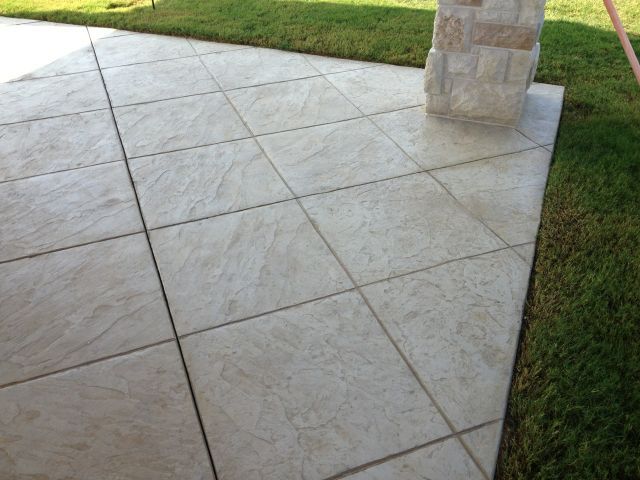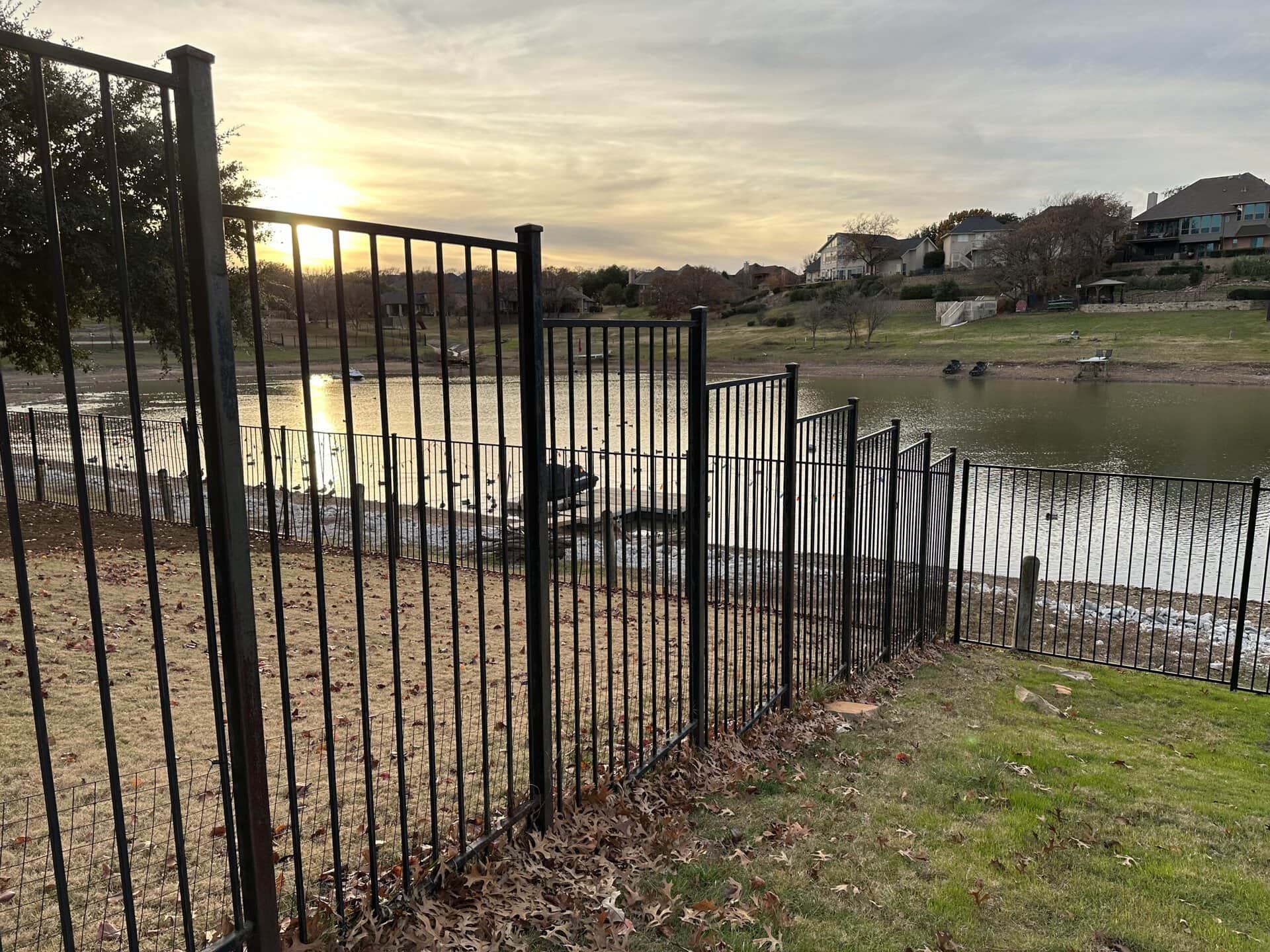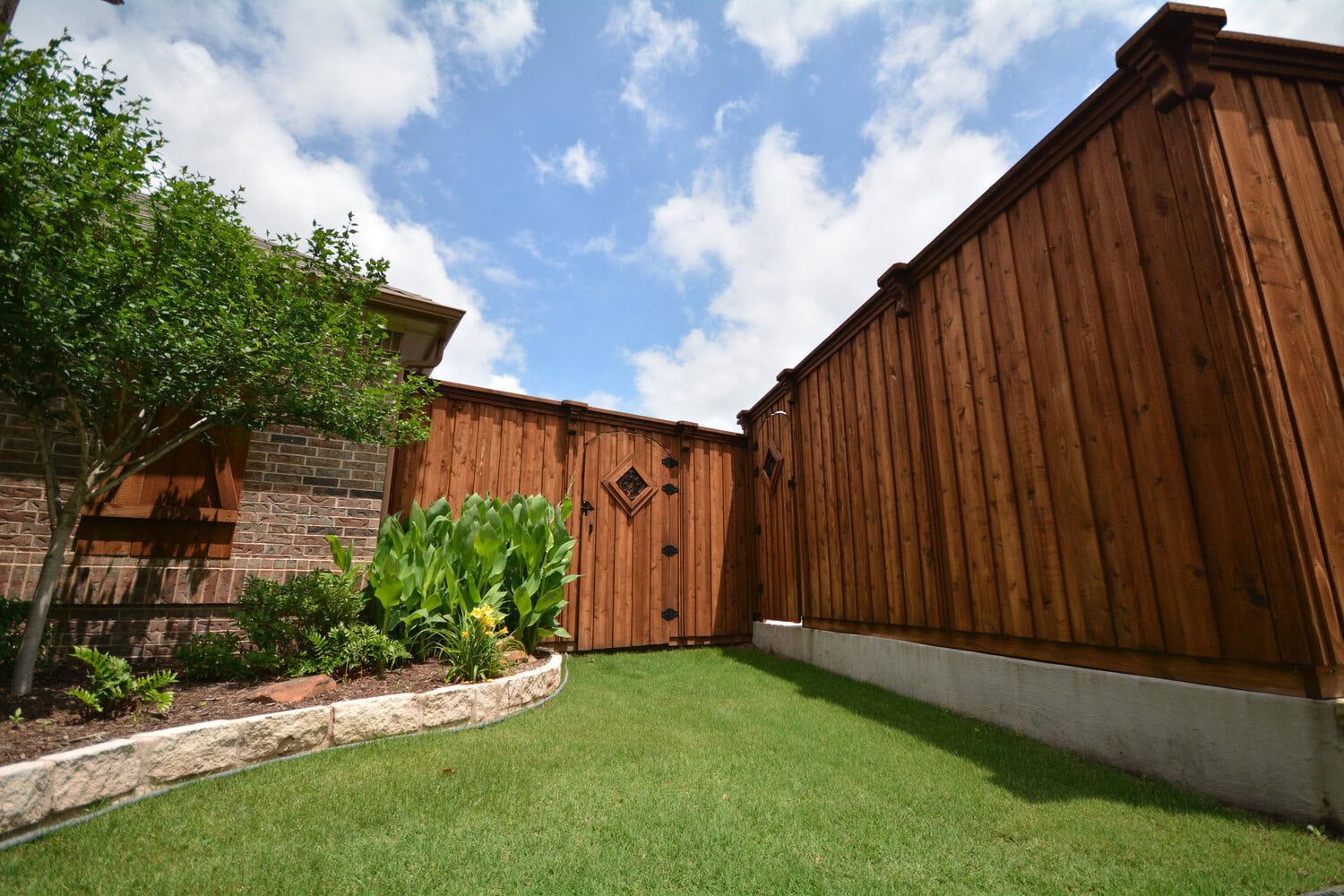Stained or Stamped Concrete
Stained and stamped concrete are both proofs that this common building material has come a long way. Today, concrete is more than just one of the most durable materials utilized in construction. It can also be an aesthetic feature of any outdoor living space, providing a pool surround, patio, or custom walkway.
Stained and stamped concrete methods can be used separately or together. They have a long service life and low maintenance that makes them perfect for outdoor uses. Keep reading below to see if stained or stamped concrete could be the perfect material for your outdoor areas.
Stained Concrete
Staining is often used to change the appearance of existing concrete slabs in outdoor areas. If you’re looking to update the look of your patio space without changing materials, staining could be the option for you. Staining changes the color of the floor but does not alter the texture of the surface. Because stain soaks into the concrete and becomes a permanent part of the material, chipping, flaking, and wear don’t affect it.
Staining is added to the concrete by applying colorants that seep into the pores and grain of concrete. The most common type is acid stains. Acid stains usually made with phosphoric acid or diluted hydrochloric acid as well as a metal salt. When applied to the concrete, the acid penetrates deeply while the salts chemically react with the concrete to produce the intended colors. The absorption of the acid stain varies with the age and density of the concrete. The color varies as well, shifting to different hues and producing a marble-like effect instead of uniform, painted appearance. Acid staining doesn’t conceal differences in the concrete texture or defects. These add character and individuality to the floor, like the natural variations in color and grain of a hardwood floor. No two acid-stained concrete floors will look the same.

Water-based and acrylic concrete stains contain no acid. They are a thin, milky fluid that seeps into concrete pores. All the colorant is contained in the fluid itself. Water-based and acrylic stains produce more predictable, uniform hues and come in a larger selection of colors than acid stains.
Stamped Concrete
The method of stamping concrete impresses design patterns or alters the surface texture of a concrete floor. Because stamping is performed when the concrete is newly poured and still wet, it’s most often used in new outdoor construction projects. Stamping can still be an option on an existing slab, it will simply require a new layer of concrete poured over the original one.
After the perimeter of the floor is framed and the steel rebar is laid in a grid, wet concrete is poured and smoothed. When the concrete is suitably dry, workers pound large rubber stamps to impress the desired pattern into the concrete, adding a creative element to your outdoor living area. Stamped concrete may be colored by several methods. The most common of which is an integral color that is mixed into the concrete before it is poured. This ensures consistent color unaffected by chips or flaking. Release colors are a powder spread over the cement immediately before stamping, and colored hardeners are applied to the surface of the concrete while it’s still wet.
Recent Posts
Categories
Request an Estimate Today
and their uses, you can create a concept that works for your
family. Keep in mind the purpose of the structure, whether natural
light in your home is a factor, and where you want the focal point
of your backyard to be. Once your gears get turning, reach out to
request an estimate on your concept.





